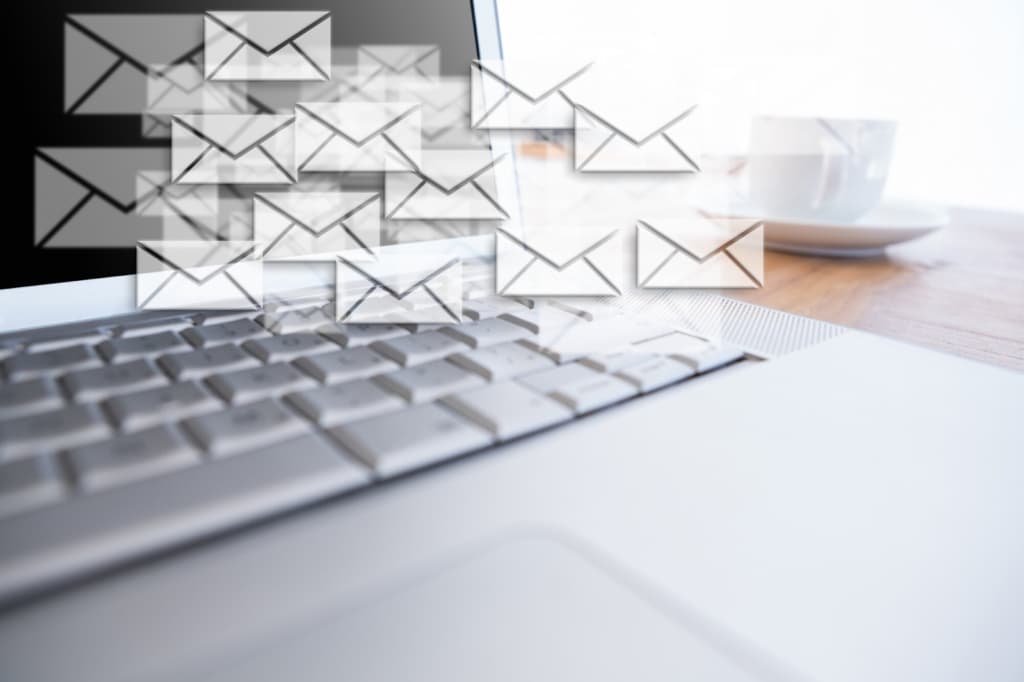Email remains the top choice for business communication. It’s a versatile tool that every organization, regardless of its size or industry, relies on to correspond with clients, partners, and suppliers. Contracts, invoices, crucial business documents – all these are sent and received via email daily across the world. Despite its numerous benefits, email communication poses one significant challenge – security.
Understanding S/MIME Protocol: A Tool for Securing Email Conversations
S/MIME, or Secure/Multipurpose Internet Mail Extensions, is a prevalent standard used for securing email communication. Its primary role is to provide authentication and encryption to your emails, ensuring that only the authorized recipient has access to the message’s content. This mechanism utilizes digital email certificates to operate efficiently.
Below, we’ve outlined an easy-to-follow guide that explains how you can use an S/MIME certificate to send and receive encrypted emails.
Step 1: Acquisition of an S/MIME Certificate
The journey to secure email communication begins with procuring an S/MIME certificate. You can acquire this certificate from a trusted third-party provider like Comodo or Sectigo. To get this certificate, you’ll need to submit personal identification information, including your full name and email address.
Step 2: Initiating the S/MIME Certificate Installation
After obtaining the S/MIME certificate, your next step is to install it in your email client, in this case, Outlook. The certificate installation procedure may vary based on the email client in use. In Outlook, the sequence is: File > Options > Trust Center > Trust Center Settings > Email Security > Import/Export. Following this path will lead to the successful installation of the certificate.
Step 3: Setting up the Email Client for S/MIME
Once the S/MIME certificate has been installed, you need to tweak your email client settings to accommodate S/MIME. Within Outlook, this process involves navigating to: File > Options > Trust Center > Trust Center Settings > Email Security. Here, you can specify the certificates to be utilized for signing and encrypting emails. Additionally, you have the flexibility to modify other security settings according to your preference.
Step 4: Dispatching the Encrypted Email
With S/MIME now set up, you’re ready to send encrypted emails. As you draft a new email, head over to the “Options” tab and enable the “Encrypt” option. Remember, for the recipient to successfully decode your email, they must have an S/MIME certificate installed in their email client.
Step 5: Decrypting Received Encrypted Email
To decrypt a received encrypted email via S/MIME, the sender must have installed your S/MIME certificate in their email client. Upon receipt of an encrypted email, the notification “The email is encrypted” will appear. To decode this email, you must ensure the necessary S/MIME certificate is installed in your email client.
Understanding Email Encryption: Securing Your Business Communication
Demystifying Email Encryption
Electronic mail encryption is a method of securing digital communication that converts understandable text into a scrambled, indecipherable format. This approach ensures that only the intended recipient, possessing the correct decryption key, can decipher the data. Electronic mail encryption is especially crucial when dealing with sensitive information that could pose a potential risk if accessed by unauthorized individuals.
In this digital age, cyber threats are a constant challenge. Cybercriminals use sophisticated methods, such as breaching electronic mail communication, to gain access to vital information like names, contact details, and login credentials. This stolen data can be used for harmful activities like identity theft and fraud.
Majority of electronic mail is securely encrypted during transmission. However, once received, the data is usually stored in plain text, which could easily be accessed by unauthorized individuals, including some electronic mail service providers. This situation is especially prevalent with free electronic mail providers that do not offer end-to-end encryption, leaving a loophole for seasoned hackers.
Electronic mail encryption systems leverage public-key cryptography and digital signature technologies to protect sensitive electronic mail content. Therefore, by implementing electronic mail encryption, users can ensure only the intended recipient can access their electronic mail content.
The Ins and Outs of Electronic Mail Encryption
Electronic mail encryption is instrumental when relaying sensitive information. When an electronic mail undergoes encryption, readable plain text is converted into scrambled ciphertext. The only party capable of decoding this cryptic message is the intended recipient, who possesses the crucial private decryption key.
The Framework of Electronic Mail Encryption
Contrary to conventional systems, electronic mail encryption architecture leverages gateway software to enforce policy-based encryption. This arrangement allows businesses to define which electronic mails require encryption and under what circumstances.
For example, it’s common for businesses to enforce a policy requiring encryption for all electronic mails containing sensitive data like personally identifiable information (PII), financial details, or other confidential information.
Electronic mail encryption software often comes in the form of a client installed on users’ desktops, laptops, or portable electronic devices. This service provides the flexibility for users to choose which electronic mails to encrypt, utilize policy-based encryption for specified electronic mails, or implement both simultaneously.
While electronic mail gateways focus on securing local network communication, some encryption solutions lay emphasis on securing the device itself. Even so, with the advent of web-based interfaces capable of reading and decrypting encrypted messages, installing electronic mail encryption software directly onto a user’s device is becoming less of a necessity.
These electronic mail encryption solutions are hosted either privately by the firm or, more commonly, provided by an electronic mail encryption software provider as a cloud-based service.

Strengthening Digital Communication: Exploring Email Encryption Techniques
Deep Dive Into Email Encryption Approaches
Apart from the widely used S/MIME and TLS encryption models, encrypted PDFs and web portal encryption also hold significant value in securing email communication. Here, we delve deeper into these techniques.
Encrypted PDFs: A Secure Way to Share Files
An encrypted PDF, zip, or Office file ensures that clients can access and download secure documents and attachments onto their devices, enhancing the confidential nature of the shared content.
How does email encryption come into play here? If an unauthorized entity were to intercept and attempt to utilize the email’s contents, they’d encounter a jumbled array of characters, an outcome of the encryption process.
The beauty of encrypted PDF attachments is that they ensure legibility across all devices and guarantee secure delivery to the intended recipient. Moreover, as the user downloads the attachment, they can access it offline at their convenience, further adding to the flexibility and functionality of this method.
Web Portal Encryption: Safeguarding Emails in Transit
In web portal encryption, the recipient must access a specific webpage to read the encrypted email. As the email is shielded by a shared key before being sent to the online portal, it meets the criteria of email encryption.
The recipient’s email application, like Outlook, Mailbird, and others, dispatches the encoded email directly to the designated website. This setup fortifies the email security, making it unreadable to anyone without the requisite login information for the portal.
By employing web portal encryption, you effectively minimize your risk of cyber-attacks, as this restricts the number of individuals with access to your company’s emails. So long as the recipient’s password remains secure, web portal encryption provides a robust shield against hackers seeking to access critical data transmitted over the internet.
Examining the Array of Email Encryption Techniques: PGP, S/MIME and TLS
Unveiling the Mechanics of Pretty Good Privacy (PGP)
PGP is a renowned data encryption and decryption program that provides cryptographic privacy and authentication for data communication. Launched in 1991, it was one of the earliest publicly accessible programs featuring the key cryptography component.
Today, both individuals and organizations employ PGP as a strong shield for their online communication, including emails and text messages.
This solution employs a combination of data compression, symmetric and asymmetric key methodologies, and various hashing functions to secure data in transit. Moreover, PGP provides a distinctive perspective on the public key infrastructure (PKI) approach.
In simpler terms, when a user sends a message via PGP, the information gets encrypted using their public key. The recipient then uses their private key to decrypt the message upon its receipt, thereby ensuring secure communication.
Harnessing Secure Multipurpose Internet Mail Extension (S/MIME)
S/MIME is a standard developed by the Internet Engineering Task Force (IETF) to facilitate public-key encryption and digital signatures. Originally created by RSA Data Security, S/MIME is now integrated into most modern email software systems.
While S/MIME offers capabilities similar to PGP, it necessitates that users obtain their keys directly from a designated Certificate Authority (CA).
Exploring Transport Layer Security (TLS) Protocol
The Transport Layer Security (TLS) protocol phased out the Secure Sockets Layer (SSL) to assume the mantle of safeguarding digital messaging across computer networks, including email, voice over IP (VoIP), and instant messaging.
Introduced in 1999 and based on the original SSL specifications, TLS was adopted as an IETF standard. Providing data privacy and integrity between computer applications is one of the chief objectives of TLS. This protocol incorporates both the TLS handshake and record protocols and operates at the application layer.
One popular variant of TLS is STARTTLS, a command that converts plaintext communication into secure, encrypted messaging. STARTTLS encrypts emails in transit, meaning neither the sender nor the receiver needs to take any action to secure the content.
While this approach is advantageous in countering passive monitoring attacks, it may render businesses susceptible to other threats such as man-in-the-middle (MITM) assaults.
Conclusion
In conclusion, sending encrypted emails in Outlook is a simple and effective way to protect your sensitive information from cyber threats. By following the steps outlined in this guide, you can ensure that your emails remain secure and confidential. Remember to always use strong passwords for your digital certificate and verify the recipient’s encryption capabilities before sending an encrypted email. Stay safe and keep your communication secure with encrypted emails in Outlook.


Leave a Reply